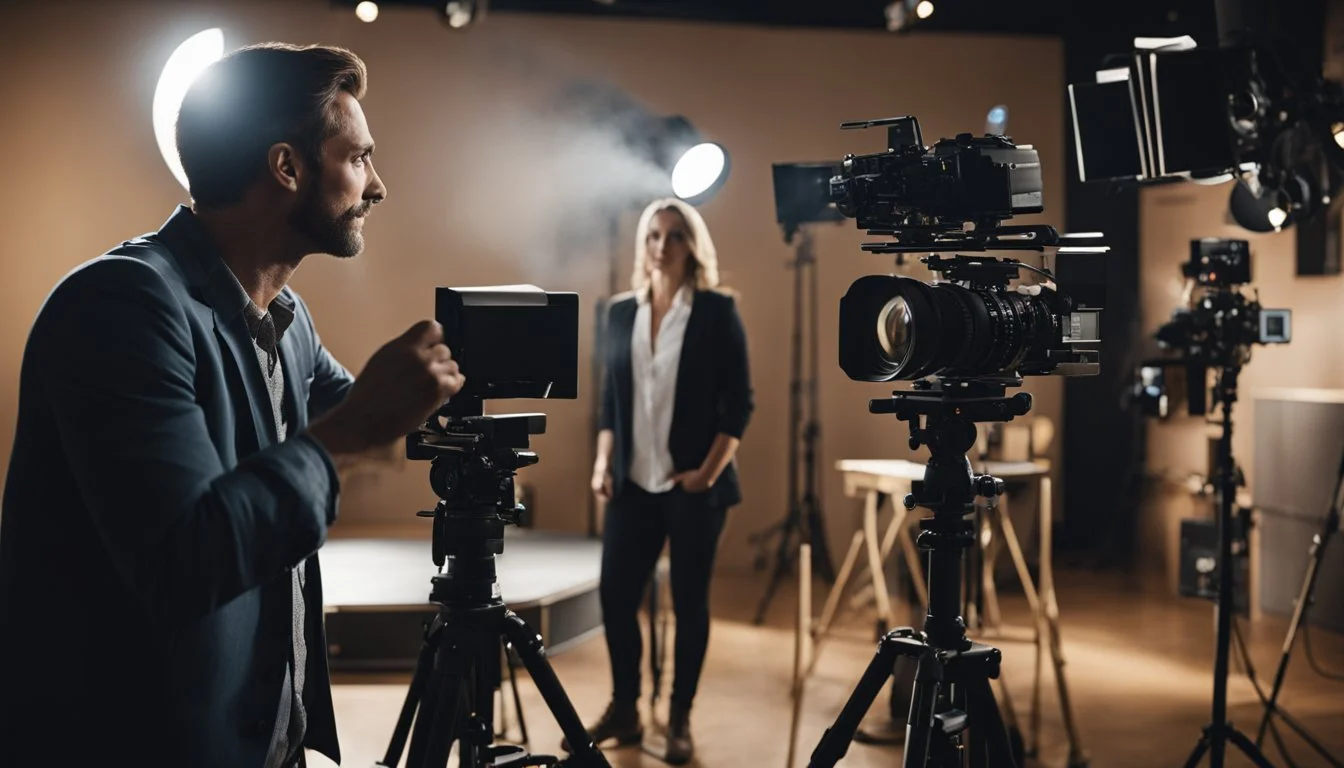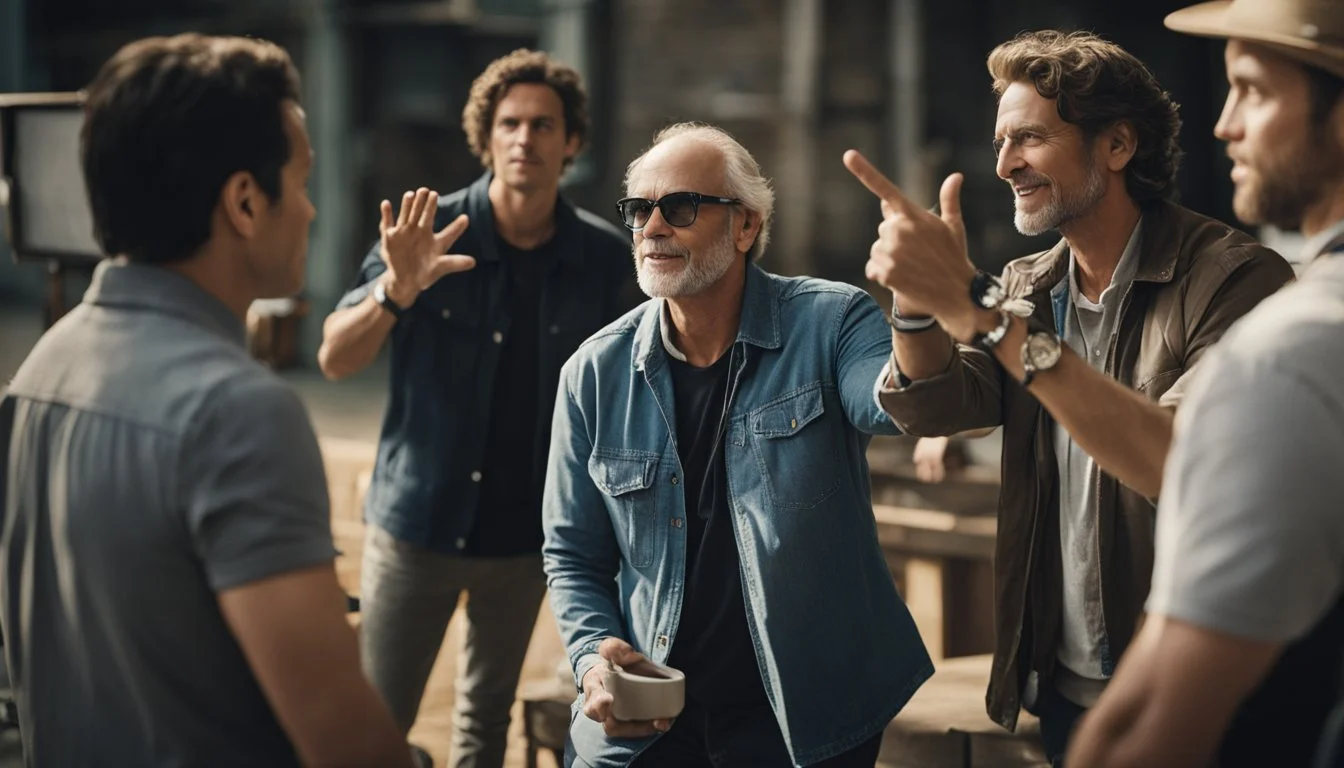Capturing Authentic Performances
Directing Actors with Mastery
Capturing authentic performances in filmmaking requires a balance of clear direction and creative freedom. Directors must provide enough guidance to shape the scene without stifling an actor’s natural interpretation. This delicate dance can elevate a performance from mere recitation to a deeply engaging portrayal.
Effective communication between the director and actors is vital. Directors should offer positive reinforcement and listen attentively to their actors' ideas and concerns. Through this collaborative approach, both parties can find the emotional beats of a scene that enhance the storytelling.
Working with non-actors presents unique challenges but also opportunities for genuine, raw performances. By employing sensitivity and patience, directors can capture moments that feel lifelike and relatable. These authentic performances resonate with audiences, making the film more impactful and memorable.
Understanding the Director's Role
A director's role in capturing authentic performances pivots on two crucial aspects: the unifying vision and effective communication. These components are essential for eliciting genuine emotions and actions from the actors, ensuring that the story resonates with the audience.
Vision and Storytelling
A director must have a clear vision of the story they want to tell. This vision is the foundation for every decision they make on set.
Understanding the narrative's thematic elements and character arcs is critical. The director interprets the script to convey the intended emotions and messages, ensuring consistency throughout the film.
Carefully planning scenes and considering how each performance aligns with the broader story are key responsibilities. This vision guides the actors, helping them understand the story's context and their characters' motivations. This guidance fosters performances that are not only authentic but also synchronized with the narrative's flow.
Communication and Collaboration
Effective communication between the director and actors is essential in bringing the vision to life. Clear, concise direction helps actors understand the nuances of their roles.
Utilizing techniques such as rehearsal and feedback sessions, the director creates a collaborative environment. These interactions encourage trust and open dialogue, where actors feel safe to explore their characters deeply.
Adjusting directions to individual actors' needs and finding the balance between guidance and creative freedom are crucial. Good directors listen actively and respond thoughtfully, enabling actors to deliver performances that are both authentic and engaging, aligned seamlessly with the film’s vision.
Preparation and Rehearsal Techniques
Effective preparation and rehearsal techniques are essential for capturing authentic performances. Key aspects include thorough script analysis, detailed character backstories, and careful blocking and staging.
Script Analysis
Script analysis is fundamental for directors and actors. It involves breaking down the script to understand the story arc, character motivations, and key emotional beats.
Directors should guide actors through this process, encouraging them to explore subtext and objectives, and emphasizing important themes. This collaborative analysis ensures that everyone is aligned and can contribute to consistent and compelling performances.
Character Backstories
Character backstories provide valuable context that helps actors embody their roles more fully.
Directors should work with actors to develop detailed histories that explain their characters' motivations, fears, and desires. These backstories give depth to the characters and make their actions and reactions more believable and grounded.
Blocking and Staging
Blocking and staging refer to the physical arrangement and movement of actors within a scene.
The director must plan these elements carefully to support the narrative and enhance the visual composition. Effective blocking ensures that the actors' movements appear natural and purposeful, contributing to the authenticity and flow of the performance.
Using rehearsal techniques like walk-throughs and improvisation can help actors become comfortable with their movements and interactions, resulting in more convincing performances.
Building Trust with Actors
Building trust with actors is fundamental for eliciting authentic performances. This involves creating a safe environment, engaging in active listening, and respecting personal boundaries.
Creating a Safe Space
A director must foster an environment where actors feel safe to express their creativity. This involves setting a positive and supportive tone on set. Non-judgmental interactions and open communication channels are crucial.
Actors should be encouraged to take risks without fearing criticism. Allowing actors to make mistakes and learn from them helps build confidence and trust in the director's vision. Transparency about the director's expectations and constructive feedback plays a significant role in this process.
Physical comfort also matters. Ensuring that the set is free of unnecessary distractions and pressures can significantly impact an actor's performance. Providing clear guidelines regarding behavior and professionalism on set can further contribute to an environment of mutual respect and trust.
Active Listening
Active listening is a critical skill for any director when working with actors. It involves giving actors full attention and acknowledging their input. This practice helps actors feel valued and understood.
Directors should always maintain eye contact, nod in agreement, and ask clarifying questions to show genuine interest in the actor's perspective. Avoid interrupting the actor and allow them to finish their thoughts fully.
Feedback should be a two-way street. Encouraging actors to share their thoughts on their characters and scenes provides fresh insights and fosters a collaborative atmosphere. When actors feel heard, they are more likely to invest fully in their roles.
Respecting Boundaries
Respecting personal and professional boundaries is essential in building trust with actors. Directors should have clear boundaries regarding physical contact and should never pressure actors to go beyond their comfort zones.
Clear communication about sensitive scenes—particularly those involving physical or emotional intensity—is vital. Providing intimacy coordinators or choreographers for such scenes ensures that actors feel comfortable and respected.
Time boundaries should also be respected. Understanding that actors need time to rest and prepare helps maintain a positive working relationship. Recognizing and accommodating individual needs, whenever possible, strengthens trust and encourages a more effective collaboration.
Directing on Set
Effective on-set directing requires clear communication, flexibility in adjusting performances, and the ability to maintain energy and focus throughout the shoot. Each of these elements contributes to capturing authentic performances from actors.
Giving Clear Directions
Clarity is key in instruction. Directors should articulate their vision to actors concisely. Using precise language, such as specifying emotional tones ("more intense sadness") or physical cues ("take two steps and then pause"), helps actors understand what is expected.
Visual aids can be beneficial. Storyboards or shot lists allow actors to visualize scenes. This method ensures that everyone is on the same page regarding the sequence and flow of the performance. Additionally, it is crucial to remain open to actors' creative input and adapt directions accordingly.
Adjusting Performances
Adjustments are necessary to align actors' performances with the director's vision. This can involve subtle changes in delivery or significant shifts in emotion. Directors should be attentive to performances and ready to provide constructive feedback.
Rehearsals can serve as valuable preparatory sessions. Directors can experiment with different approaches during rehearsals without the pressure of filming. On set, taking time between takes to communicate adjustments can significantly enhance the overall quality of performances.
Maintaining Energy and Focus
Shooting can be a lengthy and exhausting process. Directors play a pivotal role in maintaining high energy levels and focus among the cast and crew. Regularly scheduled breaks help prevent burnout, while encouraging actors to remain in character during downtime can preserve the scene's tone.
Positive reinforcement and enthusiasm from the director can motivate actors and crew members. Creating a supportive and engaging atmosphere contributes to a collaborative environment where creativity thrives. Keeping the set dynamic and focused ensures that performances remain fresh and authentic.
Working with Non-Actors
Directing non-actors in filmmaking can yield extraordinarily genuine performances. By harnessing their natural behaviors and adjusting traditional acting techniques, directors can achieve captivating authenticity on screen.
Harnessing Naturalism
Harnessing naturalism involves encouraging non-actors to be themselves. Directors should create a relaxed environment which helps to elicit true-to-life reactions. Techniques such as improvisation and real-time reactions to unscripted prompts can enhance authenticity.
Maintaining a rolling camera can aid in capturing spontaneous moments. Additionally, the director should engage non-actors in discussions unrelated to the scene to build trust and ease their nerves. This comfort translates to more convincing performances, making the audience feel the rawness of the portrayed emotions.
Adjusting Techniques for Amateurs
Adjusting techniques requires simplifying directions and showing rather than telling. Non-actors may not possess the technical skills of trained actors, so demonstrating scenes can provide clearer guidance. Breaking scenes into smaller parts and focusing on one emotion or action at a time can prevent them from feeling overwhelmed.
Clarity in expectations is crucial. Directors should use positive reinforcement to build confidence. Allowing non-actors to explore their instincts often results in organically powerful performances. Flexibility and patience from the director help in adapting to the non-actors' pace of learning and performing.
The Technical Aspects of Directing
Directing technically involves a keen understanding of cinematography and the strategic use of sound and music to elevate a film's emotional tone and narrative.
Understanding Cinematography
Cinematography is more than just capturing images; it’s about creating a visual language. Directors must collaborate closely with cinematographers to choose the right angles, lighting, and camera movements to convey the story's mood and intent.
Lighting is crucial for setting the scene's atmosphere, whether it's naturalistic or stylized.
Camera movements such as tracking shots or static frames help to emphasize particular emotions or actions.
For instance, close-ups can highlight a character’s internal conflict, while wide shots establish the setting and context.
Directors must understand the impact of different lenses and how to use depth of field to focus attention.
Sound and Music Considerations
Sound design and music play significant roles in building the film’s atmosphere. Directors need to work with sound designers and composers to ensure that auditory elements enhance the visual storytelling.
Dialogue clarity is essential and often achieved through strategic microphone placement and post-production editing.
Ambient sounds can make environments feel real and immersive.
Music should complement the emotional landscape of scenes, where diegetic music comes from sources within the story, and non-diegetic music provides an external commentary.
Using sound effects to signify actions or add tension can dramatically affect the audience's experience.
By carefully considering these technical aspects, directors can create a richer, more compelling narrative.
Post-Production Collaboration
Effective post-production collaboration is essential for maintaining authentic performances. Directors need to work closely with editors to shape performances and with sound teams for ADR and dubbing processes to preserve the intended emotional impact.
Working with Editors
Editors play a critical role in shaping the final performance. Directors should communicate their vision clearly to ensure that edits maintain the integrity of the actors' performances. This involves reviewing dailies together and discussing which takes best capture the intended emotion.
A collaborative approach helps in seamlessly blending multiple takes, using tools like continuity sheets and video playback to align performance consistency. Open communication about pacing, rhythm, and scene transitions can significantly enhance the authenticity of the narrative.
ADR and Dubbing Processes
Automated Dialogue Replacement (ADR) and dubbing are essential for clear and consistent audio. Directors must guide actors during ADR sessions to match the emotional tone of on-set performances. This involves carefully syncing lip movements and ensuring that the delivery remains true to the original context.
Dubbing for foreign markets requires directors to work with translators and voice actors. Maintaining the emotional resonance in translated scripts is critical. Directors should facilitate sessions where voice actors watch the scenes to better capture the nuances, ensuring dubbed versions reflect the original performances authentically.
Cultivating a Continuing Professional Relationship
Establishing a strong professional relationship with actors enhances long-term collaboration, leading to more authentic performances. Directors should focus on providing constructive feedback and fostering future collaborations.
Providing Constructive Feedback
Constructive feedback helps actors grow and refine their performances. It's crucial to be specific and honest.
Praise strengths: Acknowledge what worked well, such as a powerful emotional delivery or a well-timed reaction.
Identify areas for improvement: Highlight specific moments where performance could be enhanced and explain why.
Offer solutions: Suggest techniques or adjustments, such as altering focal points or experimenting with a different emotional angle, to address the identified issues.
Regular, meaningful feedback fosters a supportive environment, builds trust, and motivates actors to continue refining their craft.
Fostering Future Collaborations
Maintaining a professional relationship extends beyond a single project.
Stay in touch: Regular, informal communication keeps the connection alive. Share updates about potential projects or industry insights.
Provide opportunities: Consider actors for future roles that align with their strengths and previous work. Invite them to auditions or table reads.
Network: Introduce actors to other industry professionals who might benefit from their talent.
By fostering ongoing relationships, directors and actors can develop deeper professional bonds, leading to richer and more genuine performances in future collaborations.




